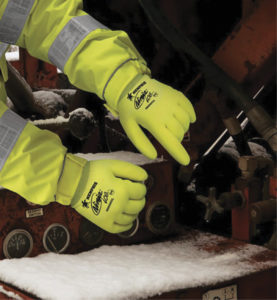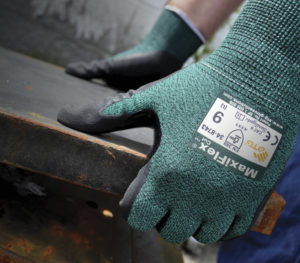What to Consider When Looking for Cut-Resistant Gloves
By: Rick Pedley, Contributor

Comfort should be a consideration in glove selection, as gloves that aren’t comfortable or don’t fit right aren’t going to be worn.
Not all work gloves are equally protective, which can make buying the right pair of safety gloves overwhelming. While you could buy the most protective cut resistant gloves on the market, most industries don’t require extreme cut resistance. It would actually be more expensive, less efficient and sometimes more dangerous to buy gloves that aren’t the correct rating for your job.
Most extremely cut-resistant gloves are very thick and low on dexterity, which makes them great for protection from severe lacerations but not for jobs that require fine motor skills. Think about the specific criteria you need before you make your glove choices.
Glove Types and Materials
Different materials will have different properties that make them better suited for different jobs. Gloves, liners and coatings offer different levels of cut resistance and other protections, like electrical conduction, abrasion resistance and flame resistance.
Dyneema and Kevlar are two high-performance fibers that see a lot of use in cut-resistant gloves on their own or as part of composite yarns with fiberglass, steel or other materials. Both materials are similar in terms of strength and cut resistance but are better suited to particular jobs.
Dyneema is breathable, moisture-wicking and light and cool to the touch. It can be laundered easily as long as you’re using lower temperatures and it holds up well against abrasion. It’s more sensitive to temperatures, though: while it’s a great fiber to use if you’re working in hot conditions, it doesn’t offer actual heat resistance. Dyneema is a great fiber for gloves that you’ll have to wear all day in jobs that require a lot of dexterity like food preparation and some construction and manufacturing work.
Kevlar, on the other hand, is very insulated: not as breathable as Dyneema, but the obvious choice in environments with extreme heat or cold hazards. While gloves made from Kevlar can be laundered, they can’t be exposed to bleach. They’re good for jobs with electrical hazards and have a great grip. For search and rescue, firefighting and cryogenics work, Kevlar gloves offer ideal protection against temperature extremes, cuts and other hazards.
Safety Standards

Gloves, liners and coatings offer different levels of cut resistance and other protections, like electrical conduction, abrasion resistance and flame resistance.
There aren’t OSHA standards that specifically address cut-resistant gloves: however, both CFR 1910.132 (protective equipment in general) and 1910.138 (hand protection specifically) both apply, as they require employees to use appropriate protection based on the work being performed. For North American companies, ANSI/ISEA 105-2016 provides guidance on test methods and performance levels for various hazards. Europe, South America, Asia and Australia use EN 388 groupings and test methods.
Whichever standard your industry uses, you can relax knowing that the gloves have been tested in extreme conditions and offer the best protection level for the job at hand. Make sure you know the necessary criteria and which standards apply and check the icons on your gloves to determine which standards yours have been tested to.
Other Requirements
Odds are that you need your cut-resistant gloves to be well-suited for other job hazards as well. Gloves that are highly cut-resistant and protect against a wide array of other hazards will need to be thicker and therefore less dexterous. Comfort should also be a consideration: gloves that aren’t comfortable or don’t fit right aren’t going to be worn.
Virtually every job will require gloves that resist some combination of cuts, punctures and abrasions. Everyone from doctors and nurses to oil rig workers, to mechanics could require the cut protection that Dyneema or Kevlar gloves provide. A lot of industrial workers could also benefit from anti-impact gloves or coating on cut-resistant gloves. For jobs that involve working with chemicals or biohazards, like in medicine, it might be best to layer disposable chemical-resistant gloves over your cut-resistant gloves to avoid contamination.
Finally, remember that while cut-resistant gloves are crucial PPE across industries, they do not replace administrative controls, and no glove will protect you from tools powered by electric motors. Your hands are some of the best tools you’ll ever use, so make sure that protecting them is one of your biggest priorities. WMHS
Rick Pedley is PK Safety’s President and CEO. PK Safety is a supplier of occupational safety and personal protective equipment and manufacturer of its own new FR line Grit. The company has been operating since 1947 and takes OSHA, ANSI, PPE and CSA work safety equipment seriously (pksafety.com).



